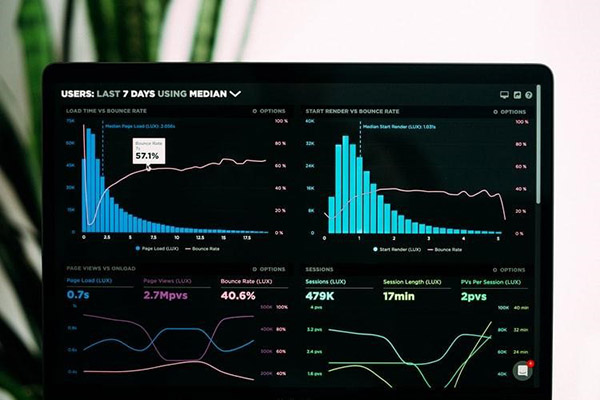Photo by Franki Chamaki from Unsplash
In recent years, companies of all sizes have heavily relied on data and collected information to develop new business opportunities and create new business models. In the past, data architecture was only a technical decision. However, times have changed. Nowadays, data architecture engenders a middle ground between business strategy and technical execution. Yet, what exactly is data architecture to begin with?
What Is Data Architecture?
According to Techopedia, data architecture is a group of rules, standards, policies, and models that define and regulate the type of data collected and how it’s utilized, managed, stored, and integrated within an organization and its IT systems. It provides an official approach to setting up and managing data flow and processing across the company’s applications and IT systems. In other words, data architecture incorporates the data strategy specifications that outline the present state, describe data requirements, direct data integration, and manage data assets.
Any modern-day company’s strategy relies on effective data use, and data architecture offers a set of policies to ensure a solid foundation for every business model. Data architecture provides guidelines for many data-related processes in many industries. These processes include collection, usage, storage, processing, and integration with different systems, amongst others.
For instance, in specific industries, data provisioning is an intricate process that represents genuine operational vulnerability. By developing and using particular data architecture methodologies, these organizations can achieve optimum accuracy with their data and enjoy cohesion regardless of where they need to push or pull data from within their IT framework scope.
Read along with our complete guide to data architecture. We’ll go through all the essential components that make modern data architecture and see how these solutions can make life easier for your organization’s data team.
Photo by Lukas Blazek from Unsplash
Things To Keep In Mind When Building A Modern Data Architecture
In case you’re currently modernizing the data architecture within your organization, here are the most important factors to keep in mind:
- Determine the most valuable data types for your business. It’s smart to only work with data that has a direct impact on your field of work. Consider leveraging current cloud offerings to manage this data without spending too much money.
- Manage data well. Make sure that your data architect is evident in the quality and relevance of the data you want. Furthermore, you can create committees to guarantee the quality of data within your systems.
- Develop flexible data systems. Build a data architecture model that will last. The finest data architectures that exist can easily change with time and blend in with new solutions that will arise.
- Establish a real-time data environment. Try combining data warehouses and new approaches to ease real-time access to past and current data. The idea here is to ensure that decision-makers have everything to make accurate decisions.
- Secure your data architecture. Threats from viruses and malware are always lurking. Make sure to address these threats on time and stay on high alert to keep your data intact.
- Utilize data as a service. Data as a service ensures that you can consolidate all your systems with ease. Data as a service works like SaaS solutions that lighten your workflow with different software. Consider creating an internal cloud and provide your company’s decision-makers access to customized solutions.
- Offer customized solutions. Management doesn’t have to rely on IT for making important decisions. Management and executives can use front-end interfaces to run queries and get fast results and answers.
Photo from HiTech Nectar
Benefits Of Data Architecture
Here’s how a virtuous and modern data architecture can change your organization for the better:
- Improved integration. To get accurate business insights, your organization needs to combine scattered data information. Modern data architecture can permit shareholders and executives to weave through information with ease, picking out relevant input from various data sets. With good data architecture and improved integration, your company may well be on the way to more innovation and better creativity.
- Enhanced efficiency with dynamic platforms. Edge computing and Cloud, among other technologies, have ensured that companies can share data within different sections and departments with ease. With proper data architecture, you will be able to fit such technology in your data streams.
- Support for diverse data. A system or application that easily handles different data types allows companies to leverage newer, robust technologies because exemplary architectures are flexible.
- Better evolution of your products. As newer and better technologies continue to see the light of day, data architecture ensures that your company keeps in step with them.
- Superior storage management. As cloud systems offer great storage solutions for your company to leverage, the trade-off between data computing and storage has become much more manageable.
Steps To Designing A Modern-Day Data Architecture
Now that you have a better idea of what data architecture is and its benefits, here’s how to create one within your organization.
Have A Data Strategy In Place
Before establishing your company’s data architecture, you’ll need to have a clear and concise data strategy to guide you throughout the process. The ideal strategy should be able to showcase how you intend to use data to influence your business. Or in other words, your company’s business model and strategy should steer the direction you take as you develop your data strategy.
For a successful upturn in your company’s business impact, elaborate data infrastructures are necessary. The data strategy emphasizes all the areas that can impact the business’ performance, and data architecture is an essential part of the whole data strategy. Your data department could use information in data architecture and strengthen your organization’s data strategy. So while the architecture stems from the plan, its elements inform the output of the policy.
Determine How You’ll Govern Data
Data architecture without proper data governance is a recipe for failure. For instance, some employees can alter the architecture to meet their end of the business strategy. And while these variations may seem harmless at first, your company won’t make the most out of this situation.
With data governance, you get to secure that everyone in the organization uses data correctly. It also provides that your data architecture goes beyond the technical infrastructure. Having a robust data governance strategy will help with defining roles and responsibilities within the organization. It will also ensure that any upfront errors won’t negatively impact the whole process of handling data, as strong data governance reduces the risks of errors from start to finish.
Attach The Data Architecture To Data Modeling
It’s becoming evident that you shouldn’t design your data architecture to work in solitude. And while data strategy steers you on what to involve in the architecture, and data governance enables you to make the most of the architecture, one thing is still missing – a description of how distinct parts of the data ecosystem interact.
Enter data modeling. Data modeling covers data relationships in the data ecosystem and helps data structures in different databases work together. Data models ensure that data architects use various components to improve business outcomes. With data models, you won’t miss out on any of your data assets.
Photo by Luke Chesser from Unsplash
Final Thoughts
Bottom line, data architecture can help your company chart a way for the next couple of years regarding data collection and usage. It also permits you to find and select the best technology for your enterprise’s most tremendous success. Effective data management is the past, present, and future of your business, and good data architecture is the cornerstone of that.








